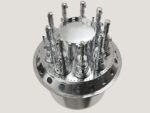In a landmark development for European defense procurement and regional deterrence posture, Poland has confirmed the delivery of 160 K2 main battle tanks (MBTs), 192 K9 self-propelled howitzers (SPHs), and 126 Homar-K multiple launch rocket systems (MLRS) from South Korea. The deliveries mark a major milestone in Warsaw’s sweeping military modernization initiative launched in response to Russia’s full-scale invasion of Ukraine in 2022.
Strategic Context Behind the Procurement
Since early 2022, Poland has embarked on one of NATO’s most ambitious rearmament programs. Driven by proximity to the war in Ukraine and a broader push to deter Russian aggression along NATO’s eastern flank, Warsaw has committed over $100 billion USD toward defense modernization. A central pillar of this effort is its partnership with South Korean defense manufacturers—Hyundai Rotem and Hanwha Aerospace—who can deliver advanced systems at scale with shorter lead times than many Western suppliers.
The contracts signed in mid-2022 included framework agreements for up to:
- 1,000+ K2/K2PL main battle tanks
- 672+ K9A1/K9PL self-propelled howitzers
- 288+ Homar-K MLRS based on the Chunmoo system
The deliveries confirmed this week—160 tanks, 192 howitzers, and 126 launchers—represent early tranches under these multi-phase contracts. These platforms are intended not only to replace aging Soviet-era equipment but also to build out new armored brigades aligned with NATO standards.
K2 Black Panther Tanks: Capabilities and Local Adaptation
The Hyundai Rotem-built K2 Black Panther is among the most modern MBTs globally. The initial batch delivered to Poland consists of baseline Korean-standard vehicles equipped with:
- 120 mm L/55 smoothbore gun (NATO standard)
- Autoloader system enabling ~10 rounds/min rate of fire
- Composite armor with modular add-on packages
- Active suspension for high-speed maneuverability across varied terrain
The Polish variant under development—K2PL—will feature enhanced armor protection (including mine resistance), domestic communications suites interoperable with NATO C4ISR networks, and potentially an upgraded powerpack. Local production is scheduled to begin later this decade via technology transfer agreements.
Tactical Role in Polish Forces
The incoming fleet will equip newly formed armored units under Poland’s expanded force structure plan. The goal is to field at least six heavy brigades by the early 2030s. The K2s will operate alongside Leopard 2A5/PL tanks already in service but offer superior mobility and digital integration.
K9 Thunder Howitzers: Backbone of Modernized Artillery Corps
The K9 Thunder SPH, developed by Hanwha Aerospace (formerly Hanwha Defense), is a proven tracked artillery platform used by several NATO members including Norway and Estonia. Key features include:
- 155 mm / L52 gun compatible with NATO-standard ammunition
- Max range ~40 km with base bleed rounds; extended range munitions under development
- Semi-automatic loading system supporting rapid fire missions (~6–8 rounds/min)
- C4I integration for networked fire missions via Topaz or similar systems in Polish use
The Polish variant—K9PL—will incorporate localized components including communications gear and logistics support tailored for Eastern European operational environments. Future batches are expected to be produced domestically at facilities like Huta Stalowa Wola (HSW).
Operational Deployment Plans
The new howitzer battalions will reinforce both existing mechanized divisions as well as new formations being raised near Poland’s eastern border. The emphasis is on rapid counter-battery capability against Russian long-range artillery assets—a key lesson from ongoing operations in Ukraine.
Homar-K MLRS: Deep Strike Capability Based on Chunmoo System
The Homar-K system, based on South Korea’s Chunmoo launcher architecture but mounted on Polish Jelcz trucks, provides a flexible deep-strike option complementing U.S.-built HIMARS systems already delivered under separate contracts.
This modular MLRS can fire various guided munitions including:
- K239 GRMLRS-type rockets: ~80 km range; GPS/inertial guidance; HE or submunition warheads.
- Tactical missiles (KTSSM): Range up to ~290 km; precision strike against hardened targets.
- (Note: Export variants may differ depending on MTCR compliance.)
A key advantage is dual-pod configuration allowing mixed-load firing profiles per mission requirements. Integration with Polish C4ISR systems ensures interoperability within national fires networks.
Diversification Beyond U.S.-Centric Supply Chains?
The Homar-K acquisition reflects Warsaw’s intent to diversify suppliers while maintaining compatibility with NATO standards. While HIMARS remains integral—with over two dozen launchers delivered—the Chunmoo-derived system offers faster delivery timelines and more flexible licensing terms for local production scaling.
Industrial Cooperation & Technology Transfer Frameworks
A cornerstone of these deals is industrial participation aimed at building domestic manufacturing capacity within Poland’s Armaments Group (PGZ). Key elements include:
- Korean-Polish joint ventures: For local assembly lines of future batches (K9PL/K239).
- MRO infrastructure: Depots for lifecycle support co-developed with Hyundai Rotem/Hanwha Aerospace.
- Ammunition production rights: Under negotiation for certain calibers used by all three platforms.
- Crew training programs: Conducted jointly in Poland and South Korea since late-2023.
This approach not only enhances readiness but also aligns with EU/NATO goals of strengthening indigenous defense industrial bases among frontline states.
Toward Strategic Autonomy?
If fully realized over the next decade—including licensed production—the partnership could position Poland as a regional hub for servicing Korean-origin land systems across Central Europe. This would reduce dependency on overstretched Western OEMs while reinforcing transatlantic interoperability through shared standards.
Sustainment Challenges and Future Outlook
Sustaining such rapid expansion poses logistical challenges—from spare parts pipelines to trained personnel throughput. However, Polish defense planners have prioritized parallel investments in training centers (e.g., Toruń Artillery School expansion) and logistics hubs near Rzeszów/Lublin corridors supporting eastern deployments.
Additionally, joint exercises involving these new platforms are planned throughout late-2025 into early-2026 under NATO command structures such as Defender Europe series drills.
Beyond Initial Deliveries?
The confirmed deliveries represent only part of multi-year framework agreements extending into the early-to-mid-2030s. Follow-on orders are expected once local production ramps up post-2026–27 timeframe—including potential export opportunities via PGZ-led consortia targeting regional partners like Romania or the Baltics.
Conclusion: A New Axis in European Land Power Projection?
This trilateral dynamic between Warsaw-Seoul-Washington may reshape Europe’s land warfare architecture over the next decade. With cutting-edge Korean platforms integrated into NATO’s eastern frontlines—and backed by U.S.-style C4ISR doctrine—Poland is positioning itself not just as a consumer but as an emerging producer-exporter within Europe’s evolving security ecosystem.









